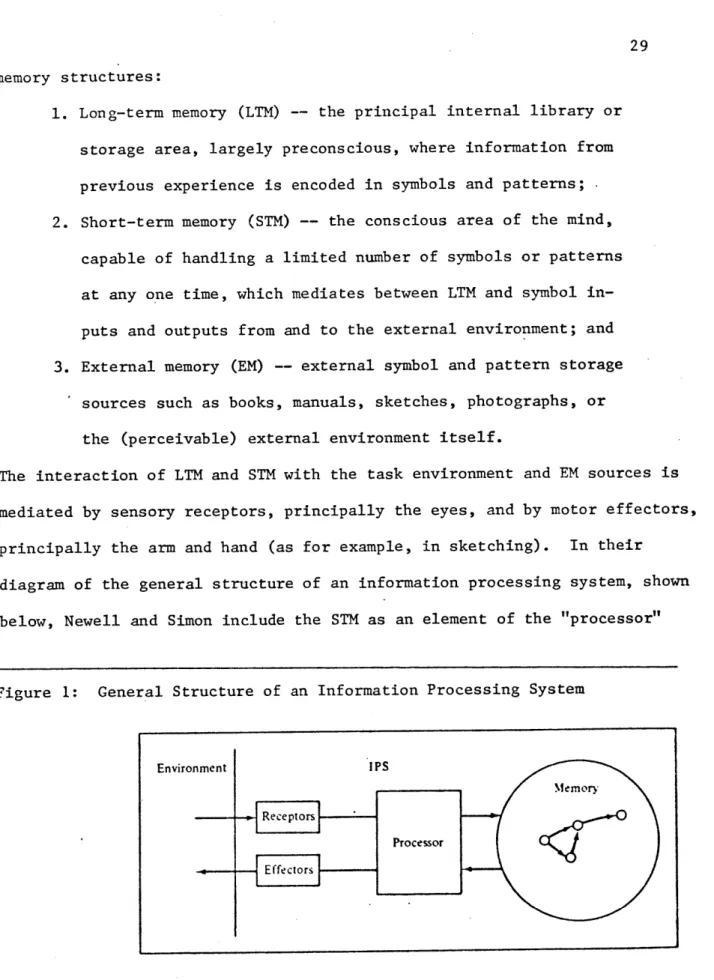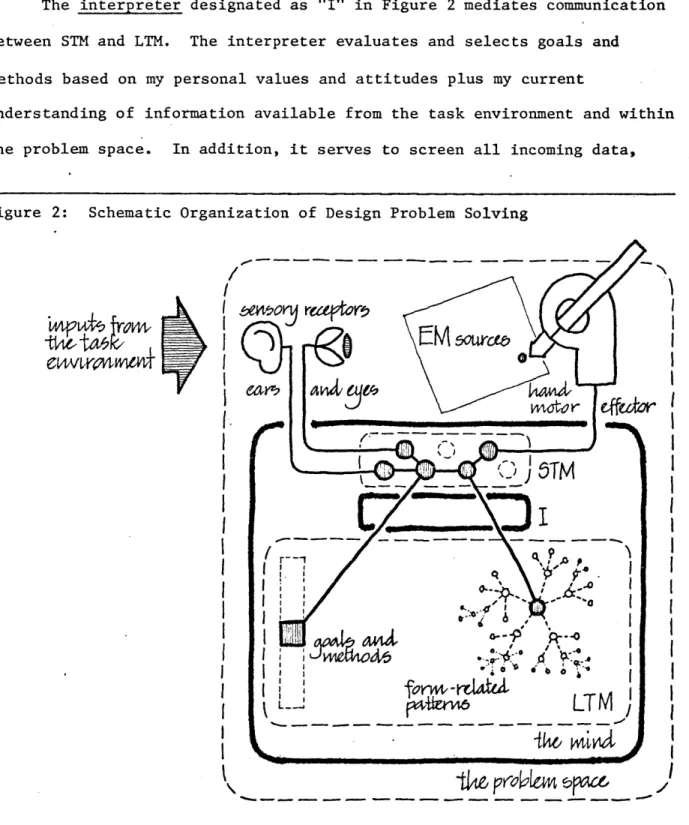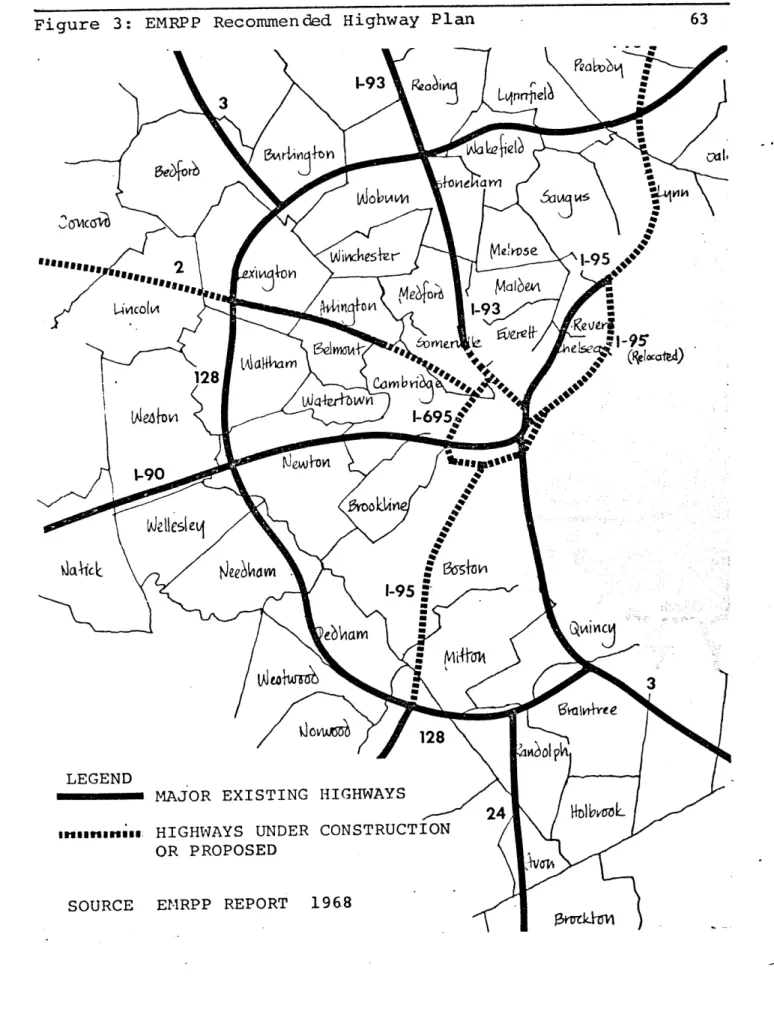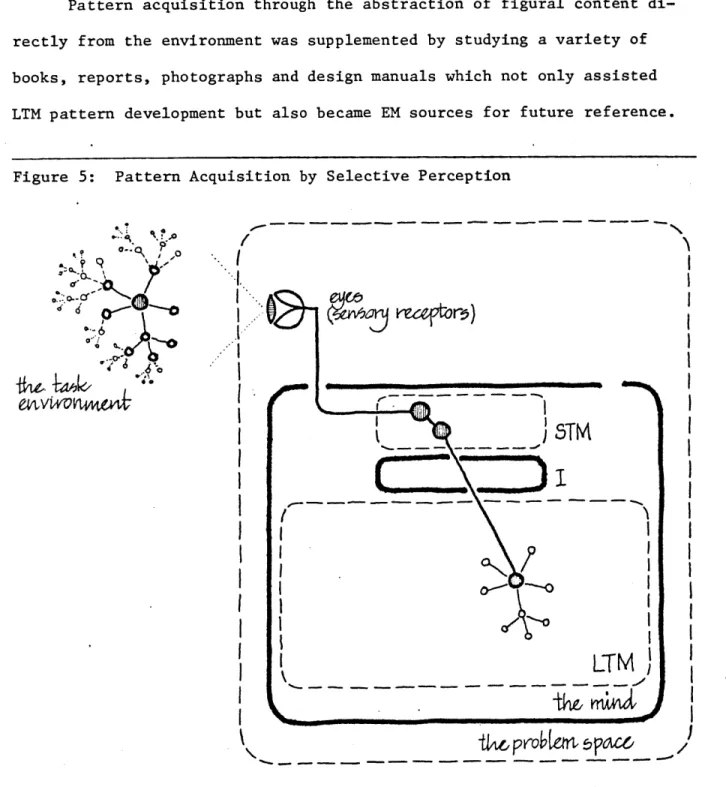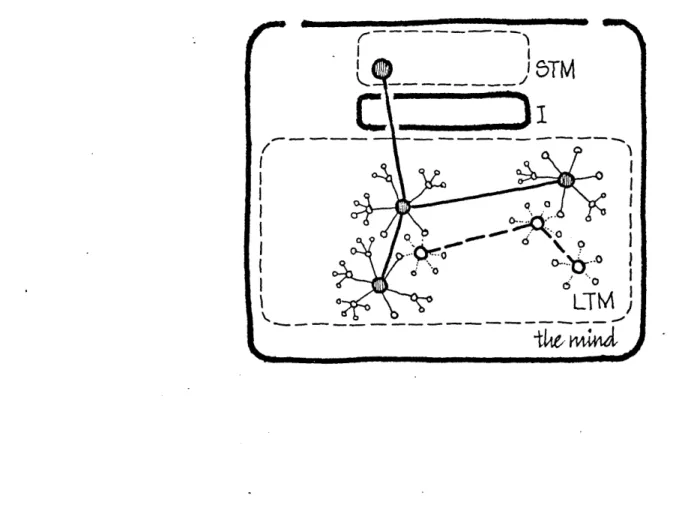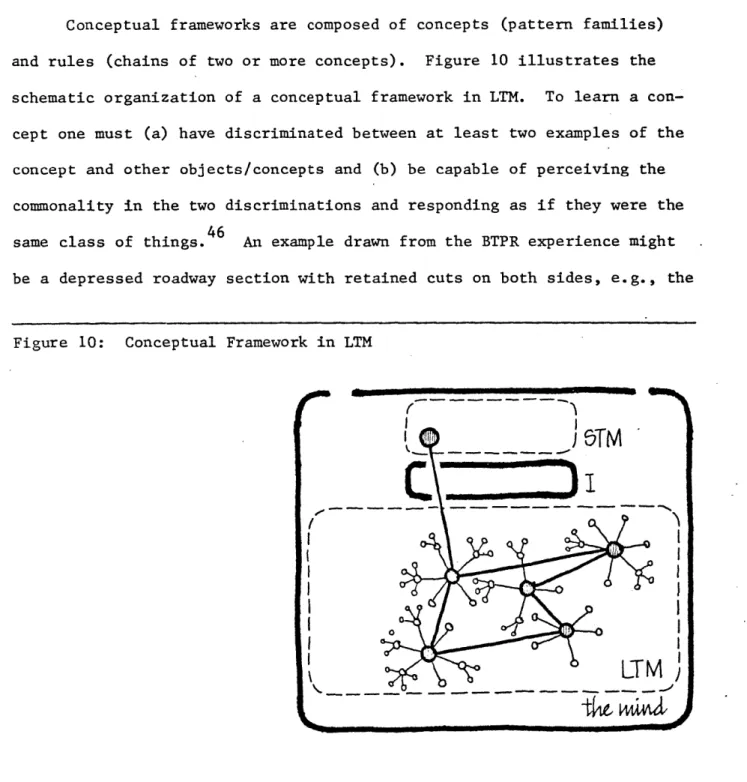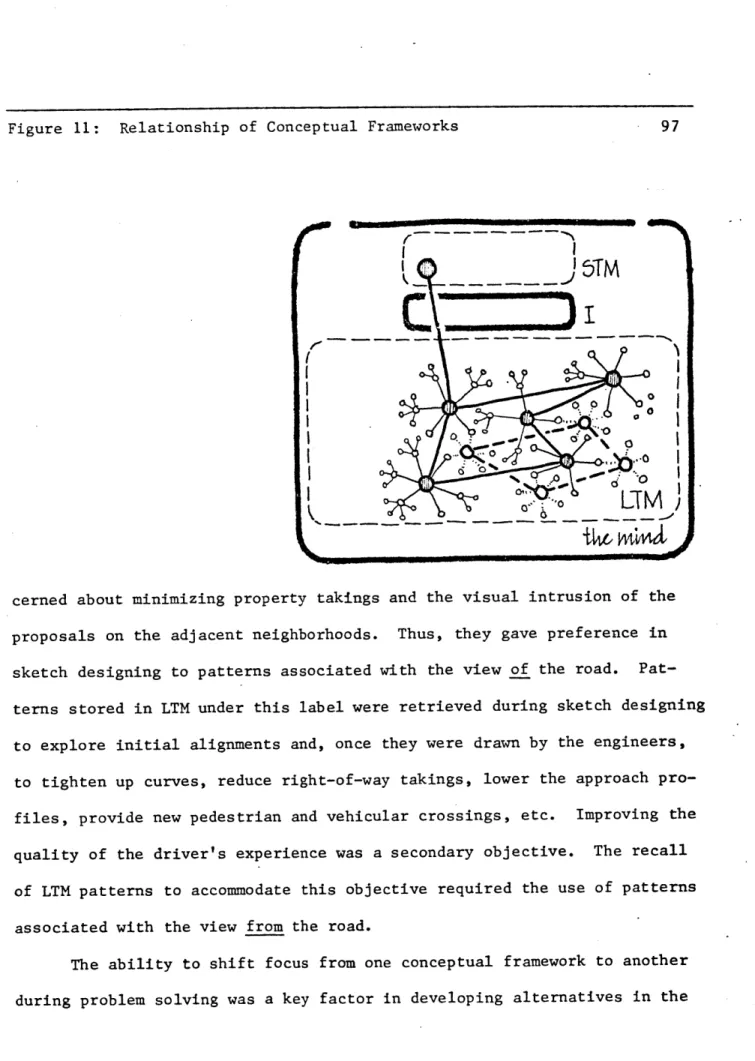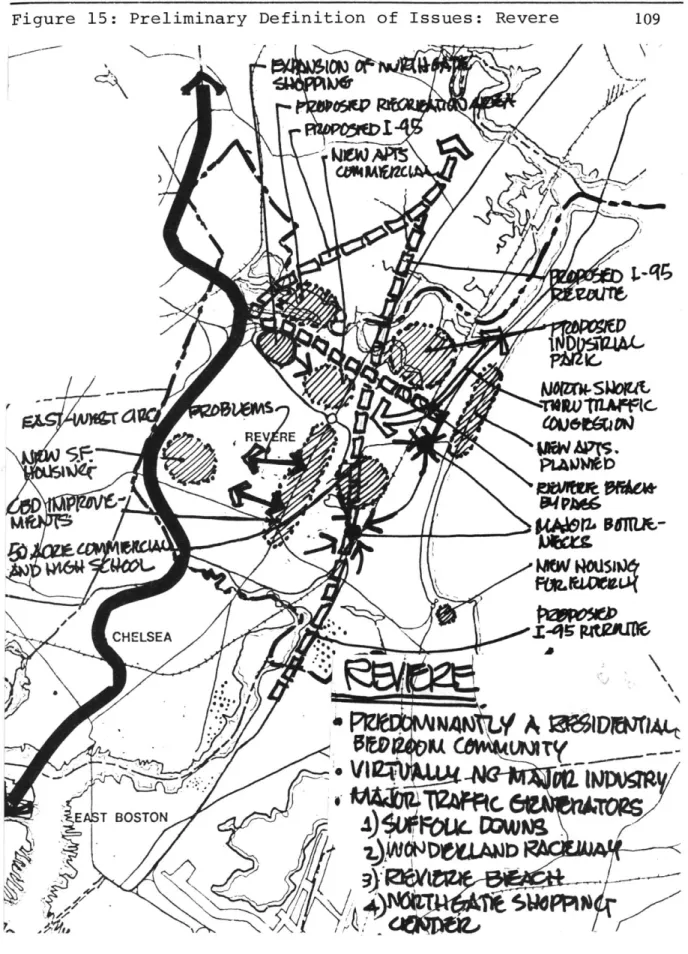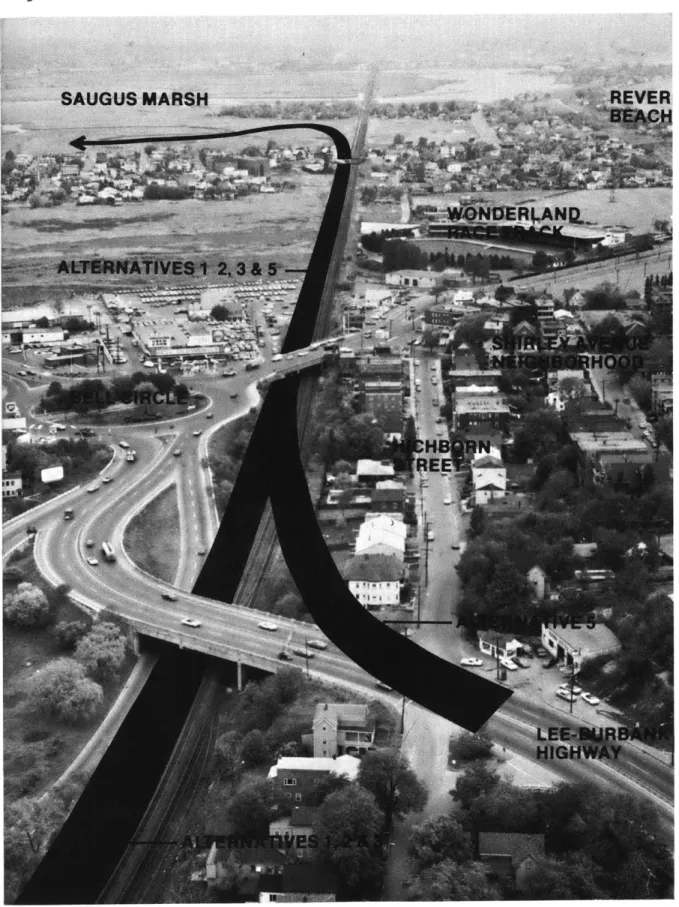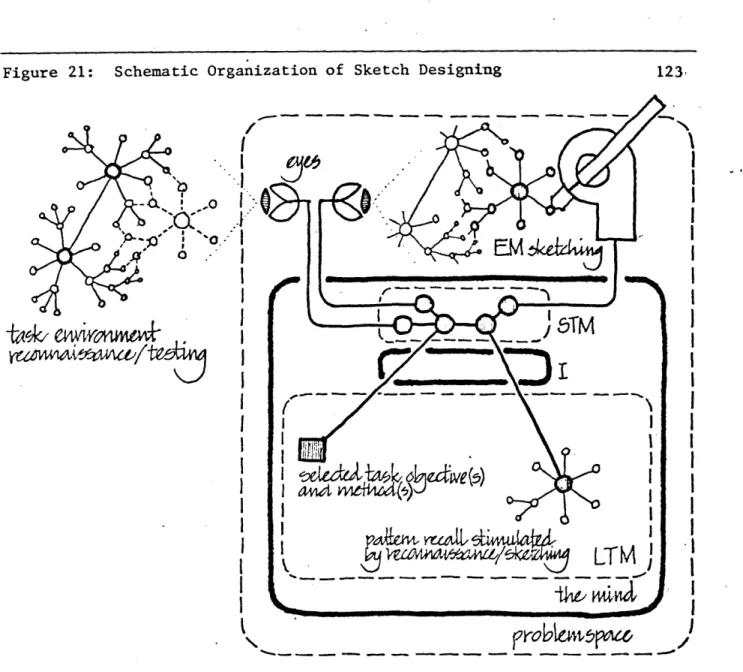IN
PARTICIPATORY PLANNING PROCESSES A Case Study of the
Boston Transportation Planning Review by
WILLIAM DAVID MARTIN
B.Arch., University of Southern California (1964)
Submitted in Partial Fulfillment of the Requirements for the Degree of
MASTER OF CITY PLANNING and for the Degree of
MASTER OF ARCHITECTURE IN ADVANCED STUDIES at the
MASSACHUSETTS INSTITUTE OF TECHNOLOGY September 1976
Signature of Author... ... . . Department of Urban Studies and Plann' g
September 12, 1976
Certified by.. . . .
TislSuperviso. l-D"epartment of Urban s' and Planning
e upe; Department of A>iecture
Accepted by... ..
Chairman, Departmental Committee on Grad ate Stu4ents Department of Urban Studies and Planning
Chairman, Departmental Committee on Gradu e Students Department of Architecture
NOV 30 1976
ABSTRACT
THE ARCHITECT'S ROLE IN PARTICIPATORY PLANNING PROCESSES A Case Study of the Boston Transportation Planning Review William David Martin
Submitted to the Department of Urban Studies and Planning and of Architec-ture on September 13, 1976, in partial fulfillment of the requirements for the degrees of Master in City Planning and Master of Architecture in
Advanced Studies.
The objective of this thesis is to understand design problem solving beha-vior in a participatory planning context. The context is the Boston
Transportation Planning Review, an eighteen-month multidisciplinary study of several controversial interstate highway projects proposed for the Boston metropolitan core. An analysis is made of the architect/author's problem solving process in developing alternatives for Interstate 95 Relocated and the third Harbor Crossing.
The study is divided into three parts.
The first part, METHODOLOGY, traces the origin and development of the thesis and presents the basic concepts used in the analysis. Concepts are organ-ized by two themes: those which explain the architect's choice of information, including factors of the task environment and individual attributes of the architect; and concepts which explain the use or processing of information, including divergent and convergent thinking processes, selective attention,
sketching, pattern acquisition and conceptual framework development.
The second part presents an analysis of problem solving behavior in two con-trasting episodes. The first episode, 1-95 RELOCATED, illustrates the
operation of the concepts identified in the METHODOLOGY. A detailed description of the task environment and the learning process the architect experienced
in the project start-up phase is followed by a description of the initial conceptualization and design development of alternatives. The second epi-sode, HARBOR CROSSING, illustrates some of the problems encountered in
applying a design strategy that worked well in the first episode to a differ-ent task environmdiffer-ent.
The third part of the thesis presents CONCLUDING OBSERVATIONS suggested by the analysis. The fundamental conclusions are (1) that an holistic approach to the study of design behavior yields insights not possible with an analytic approach; (2) that much more is knowable about the nature of design and design-ing than the author had heretofore been taught/exposed to; (3) that an intro-spective approach to design analysis can be a powerful tool for self-directed growth and "real" (-first-hand) knowledge; (4) that the functioning of an
much of the basic research of Newell and Simon, de Bono, Arnheim, Bruner
and Lynch, among others; (5) that designing transportation alternatives shares many essential details of designing in other contexts; and (6) that personal values play a crucial role in design behavior, exerting a powerful influence on the design process and the products of that process.
Insights and extensions derived from these conclusions include the postulation of a developmental explanation of the "rational" model and the "inspirational" model of design, the need for a reorientation of design education and several
recommendations for the design of future planning/design processes.
Thesis Supervisors: Ralph A. Gakenheimer Tunny F. Lee
Titles: Associate professor Associate Professor of Department of Urban Urban Design
ACKNOWLEDGEMENTS
Many minds, hearts and hands have supported this effort through its various stages of evolution. I would especially like to thank:
Professors Ralph Gakenheimer and Tunney Lee for their patient guid-ance and insights through many drafts and discussions.
Dean William Porter and Professor Kevin Lynch for their inspiration, example and timely suggestions at critical junctures throughout my graduate experience at MIT.
Peter Hopkinson, David Smith and Charles Steinman, colleagues at Skidmore, Owings and Merrill, for their continuing support of my profes-sional growth and their helpful comments on many drafts.
Guy Weinzapfel and Adel Foz for the sharing of many ideas and in-sights that are central to the thesis as well as for their thoughtful re-views of my drafts.
Numerous others at MIT, SOM and the BTPR, whose support of my profes-sional and academic development during this period have contributed to the preparation of this thesis.
ABSTRACT ACKNOWLEDGEMENTS CONTENTS LIST OF FIGURES PREFACE 4 1 3 4 5 7 I METHODOLOGY 14 Introduction Hblistic Approach Models and Concepts
Information Processing Models -Factors of Choice
II EPISODE ONE: 1-95 RELOCATED 55
Introduction
The Task Environment
Genesis of the Problem Space Phase I: Initial Concepts Phase II: Design Development Summary
III EPISODE TWO: HARBOR CROSSING 168
Introduction
Comparison with 1-95 Relocated Summary of Phase I
Derivation of Phase II Alternatives Summary
IV CONCLUDING OBSERVATIONS Conclusions
Extensions Postscript
APPENDIX: BTPR STUDY DESIGN SUMMARY SECTION FOOTNOTES 208 229 263 268 BIBLIOGRAPHY
LIST OF FIGURES 5
I 1. General Structure of an Information Processing System 29 II 2. Schematic Organization of Design Problem Solving 59
3. EMRPP Recommended Highway Plan 63
4. BTPR Corridors and Major Facilities Under Study 66
5. Pattern Acquisition by Selective Attention 85
6. EM Graphics as Pattern Development Mnemonics 87
7. Pattern Reinforcement Through Sketching 88
8. Pattern Development in LTM 89
9. Pattern Families in LTM 90
10. Conceptual Framework in LTM 94
11. Relationship of Conceptual Frameworks 97
12. Figure-Ground Relationship 98
13. Distortion of the Task Environment 102
14. North Shore Transportation Problems 107
15. Preliminary Definition of Issues: Revere 109 16. Major Transporation Problems and Conditions 110 17. Destination of Traffic Entering Revere from North 113 18. Reconnaissance Testing of Sketch Alignments 118 19. Boston and Maine Right-of-Way Corridor Alignments 120 20. Alternative Corridors and General Land Use 123 21. Schematic Organization of Sketch Designing 122
22. Key Map of Basic Choices 125
23. Facilities Dropped from Further Consideration 128 24. Facilities to be Given Priority Consideration During 129
Phase II - Highways 130
25. Facilities to be Given Priority Consideration During 130 Phase II - Transit
26. Schematic Organization of Interactive Design-Problem 136 Solving
27. Alternative Corridors 138
28. MBTA Blue Line Corridor Transit Options and Revere 141 Beach Connector
29. Northeast Expressway Corridor 144
30. Program Package Concept: Alternative 1 145 31. Program Package Concept: Alternative 2 146 32. Program Package Concept: Alternative 3 147 33. Program Package.Concept: Alternative 4 148 34. Program Package Concept: Alternative 5 150 35. Program Package Concept: Alternative 6 151 36. Property Displaced and Regained: Area A 155
Upper-Revere Street
37. Joint Development Concepts: Saugus Marsh Corridor 156 38. Schematic Organization of Design Problem Solving 59 III 39. Major Transportation Problems, Downtown Metropolitan 178
Region
43. Origins and Destinations of Third Harbor Crossing 190 Users (1980)
44. South Boston - Reserved Channel Alignment 191 45. Program Package 2: Exclusive Bus Harbor Crossing 193 46. Program Package 3: No New Harbor Crossing
197 47. Program Package Transportation Elements and 199
Summary Description
PREFACE
This thesis is about design behavior; the interrelationship between human problem solving faculties and the design environment which sets these
faculties in motion.
For all that has been written and said, the individual architect under-stands little about the inner workings of the processes by which he is known as a "professional". Architectural education still falls back on a collec-tion of myths to explain the "mystery" of the creative process. Insights into the true nature of design are invariably partial; disembodied from the social and spatial contexts which give them meaning they conform to mechan-istic models which give the illusion that design may be understood as a col-lection of separate bits and pieces, things, events, causes and effects.
The rationale for the analysis of separate parts should be grounded in a recognition of their essential inseparability. This thesis attempts to present an analysis of design behavior in parts that may be perceived as a whole; it respects the inherent mutuality of process and context, tasks and task environments, facts and values.
The analysis is based on my experiences as an architect/urban designer/ planner on the staff of the Boston Transportation Planning Review (BTPR), an eighteen-month multidisciplinary study of metropolitan expressway and tran-sit facilities. The commencement of the BTPR coincided with the completion of my first two years of the joint degree program at MIT. I was exploring ideas for a thesis topic when I learned that Skidmore, Owings and Merrill, one of the design consultants, would be hiring architects in Boston to work on the project. I decided'to take a leave-of-absence from MIT to
pate in the BTPR and then write my thesis on some aspect of my experience. The BTPR was a precedent-setting transportation planning process; yet there may never be another process like it. This is because the context which spawned the BTPR is unique to a particular juncture in Boston's
evolu-tion, a juncture characterized by (1) the eclipse of the automobile as the dominant transportation solution to urban (re)development; (2) the politi-cal awakening of core area communities to the excesses of continued express-way construction in the inner city; (3) the failure of technocratic planning models to deal with problems and processes which include extensive social consequences; and (4) the termination of the federal interstate highway
pro-gram which, with its guarantee of 90 percent federal funding, had for many years distorted the evaluation of alternatives to the automobile for urban mobility.
The increasing awareness of the need for radical change in transporta-tion planning was widespread. Yet the inertia provided by previous highway proposals and vested interest groups of land speculators, highway builders, and the auto/oil industries (as well as many professionals and public offi-cials) was a formidable obstacle to be overcome by Governor Francis Sargent's call for a "balanced transportation plan" for the Boston metropolitan core.
The BTPR staff thus found itself on the front lines in a battle be-tween conflicting values and priorities that marked an historic turning point in Boston's spatial and socio-political development. It was an ex-citing place to be! For a few veteran community leaders it was apparently a foregone conclusion that once the highway proposals were subjected to a participatory process they would not be constructed. As one who found
him-self on the front lines for eighteen months, I did not share this perception
of political inevitability; the conflict was real and the exposure of criti-cal issues and choices for public debate required a total commitment of skills and energies.
The thesis explores the origins and inner workings of my problem sol-ving process through an analysis of the development of alternatives for the third Harbor Crossing and a segment of Interstate 95 through the Boston re-gional core. The analysis is concerned with design as a total system of be-havior rather than as products or isolated processes. The focus is thus- on
the inter'relationships between my professional skills and personal values on the one hand, and the demands of the BTPR problem context on the other. A basic methodological assumption is that the understanding of behavior
re-quires a concurrent analysis of both the task and the task environment, that the two, in fact, arise mutually or imply one another. Thus, the thesis describes the essential elements of the BTPR task environment and analyzes my "symbiotic" relationship to that environment in the development of alter-natives.
The exploration of the relationship of the BTPR task environment to my problem solving behavior has been one of the major objectives in writing the thesis. A second objective has been to identify and understand the principal features and mechanisms of my design process as it evolved during the BTPR. , In accomplishing this objective, I believe I have "demythified" many misconceptions about the nature of design and designing. A third ob-jective has been to document this process of self-discovery and integration of ideas. A fourth and final objective has been to use the thesis to
ex-plore my ideas regarding design education, the design of planning processes and the identification of normative roles for the architect in future pro-cesses.
The thesis is structured to accomplish these four objectives. Chapter I, METHODOLOGY, begins by describing the evolution of the thesis and the selection of two complementary "themes": the choice and the use of informa-tion in the development of alternatives. Next, it describes the basic con-cepts used in the analysis of the use of information during BTPR design epi-sodes. Concepts relating divergent thinking, selective attention, sketching, pattern acquisition and conceptual framework development are used to adapt Newell and Simon's (1972) information processing model to fit my design
pro-cess. Finally, the factors influencing my choice of information -- contex-tual factors and individual attributes -- are identified and the notion of orientation is introduced to explain the operation of my personal values and motivations.
The second and third chapters present two contrasting episodes from the BTPR to illustrate my problem solving behavior. EPISODE ONE: 1-95 RE-LOCATED describes the development of six alternative Program Packages for Interstate 95 Relocated (I-95R) in Boston's Inner North Shore. The first two sections of this episode describe in some detail the BTPR/I-95R task environment and my initial perceptions and preparation for designing in this environment. The following two sections describe the process of con-ceptualization -- the initial translation of problem statement into form solutions -- and the development of a set of Basic Choices into six final Program Packages for community review and decisions.
EPISODE TWO: HARBOR CROSSING illustrates the behavioral adaptation required by the application of the problem solving strategies learned in the first episode to a different task environment. It begins by comparing the task environments of the two episodes and then analyzes the implications of these differences in the development of three radically different alter-natives for the Harbor Crossing study area. Two complementary factors are seen as the key to understanding the problem solving sequence for this epi-sode: the role of the East Boston community and my orientation toward the participatory process.
The fourth chapter, CONCLUSIONS AND EXTENSIONS, presents major conclu-sions based on the analysis of the episodes and some of the implications of
these conclusions for design education, the design of participatory proces-ses and normative roles for the architect in future procesproces-ses.
The reader interested primarily in problem solving and design methods will be most interested in the last three sections of the METHODOLOGY, the
"Genesis of the Problem Space" and "Summary" sections from EPISODE ONE and the first part of the CONCLUDING OBSERVATIONS. The reader interested pri-marily in the BTPR context and the design of planning processes will want to read the Study Design summary in the APPENDIX, "The Task Environment" and "Phase I" and "Phase II" from EPISODE ONE, all of EPISODE TWO and the sec-tion in the CONCLUDING OBSERVATIONS dealing with the design of future pro-cesses. And for the reader interested in design as behavior -- as the inter-play between "choice" and "use", facts and values, tasks and task environ-ments - he may have to read the entire thesis, perhaps beginning with the CONCLUDING OBSERVATIONS to get a sense of the whole.
It should be noted that the term "architect" as used in this thesis refers to the author and other BTPR staff members with architectural educa-tion backgrounds. The term is intended to differentiate these individuals from the engineers, economists, transportation analysts and other BTPR dis-ciplines. Most of the BTPR architects had had previous experience with large-scale design projects. It would perhaps have been more correct to use the term "urban designer"; clearly, the grasp of issues, relationships and processes was beyond that normally associated with architectural pro-jects.
A final caveat for the reader: this thesis is written from the point of view of one architect in the BTPR: the author. From this vantage, the reader who is unfamiliar with the BTPR is likely to view the process in the same manner he perceives the sun to be rising in the morning instead of the earth turning. (There are several recent references on the BTPR which pro-vide a more "balanced" view.
)
The architect played an important role in the development of alternatives, to be sure, but the final products of the BTPR were decisions, not alternatives, and the architect was by no means at the center of the BTPR decision-making process. The architects represented less than one-tenth of the total BTPR technical staff. Moreover, the staff itself was only a small part in the constellation of participants which in-cluded numerous political leaders, federal and state agency representatives, public and private interest groups, community groups and organizations, and innumerable private citizens -- each of whom had a special point of view to express and.some personal stake in the eventual outcome of the study. The products which finally emerged (i.e., the Governor's decisions) were theresults of a process which managed to take account of the inputs and con-cerns of the full spectrum of participants.
INTRODUCTION 16
HOLISTIC APPROACH 18
Escalation and Regression Two Themes
MODELS AND CONCEPTS 23
BTPR Study Design
INFORMATION PROCESSING MODELS 27
Newell and Simon's IPS Model Limits of the Newell-Simon Model Divergent Thinking Process
Selective Perception Sketching Conceptual Frameworks FACTORS OF CHOICE 46 Images Orientations
There was a young man who said, "Though It seems that I know that I know
What I would like to see Is the 'I' that knows 'me'
INTRODUCTION
The construction of a valid methodology by which to rationalize. what must be a relatively unusual thesis approach, i.e., an analysis of my own design process, was problematic. Many investigators have made im-portant contributions to research by analyzing their own behaviors, but
these have invariably been done under carefully controlled laboratory con-ditions, the results of which could easily be replicated by others. This thesis has neither the objectivity of a rigorous "scientific" analysis of someone else's work nor the test of sufficiency resulting from a carefully controlled analysis of my own behavior. The analysis was done after the "experiment" (my involvement in the BTPR) was completed; it is (necessar-ily) subjective, a Rashomon perspective. The perceptions of my role have evolved as much during the writing of the thesis as they did during the process itself. Finding an appropriate thesis methodology under these conditions was a lot like chasing a phantom: the methodology changed al-most as fast as my perceptions. (Thus the syllogism on the last page of the POSTSCRIPT.) As a consequence, the methodology is, to a considerable extent, a summary of how the thesis evolved to its present state.
The focus of the thesis is clearly on the individual, on myself. Yet the analysis is empirical rather than experimental: there is no ex-perimental design and no control group, as might be expected in a
tradi-tional psychological study. Rather, through detailed analysis there is an attempt to understand both the specific mechanisms of my problem solving behavior and the relationship of that behavior to the highly com-plex task environment of the BTPR. Although my process was well
documen-16 INTRODUCTION
ted in terms of keeping all of my meeting notes, memoranda, sketches, work programs, etc., participant observation theory was of little help in de-veloping the methodology since I had no systematic plan of analysis during the BTPR by which to "objectively" assess my experiences.
Newell and Simon (1972) have noted that the study of problem solving when applied to psychology leads naturally to constructing systems that model the behavior of a single individual in a single task situation.
"Full particularity is the rule not the exception."2 In terms of psycho-logical theory, then, the methodopsycho-logical objective has been to deal with the uniqueness of my own behavior (idiographic) as distinguished from an experimental approach which deals with the individual as an intersection of statistically defined populations (nomothetic).
HOLISTIC APPROACH
Most studies of complex environments follow one of two basic ap-proaches (or some combination of the two): analytic or holistic.3 The analytic approach generally begins with concept formation, hypothesis de-velopment and testing. It then describes possible interrelations among
concepts, developing various levels of assertion about reality, from em-pirical generalizations based on precise measurements to general laws and
tested theory. The ultimate objective of the analytic approach is to de-velop a set of general laws which are independent of the situation, such
that any given similar situation could be understood by reference to them. Logical justifications for the analytical approach are well developed.
It has been identified for some time with scientific method (which makes the holistic approach "unscientific" by definition). The precise measure-ments required by the analytic approach suggests the use of survey tech-niques or comparative analyses.
The holistic approach, by contrast, seeks to understand organiza-tion. The careful study of a single case, while lacking the generaliza-bility of the survey, is a more promising strategy for understanding how various elements are organized and operate as a system. The implicit as-sumption is that the knowledge gained is applicable to a class of similar, complex situations. The density of detail makes the case study ideal for the development and testing of complex models of the organization of the case elements.
This thesis follows the holistic rather than the analytic approach; my process of introspection and self-discovery did not lend itself to a
18 HOLISTIC APPROACH
priori determination. Instead the structure began to emerge only very slowly as I got further into the analysis. I endeavored to find a
pat-terning in the analysis of my problem solving process which differentia-ted between the invariants of problem solving behavior on the one hand and the variables of the task environment and individual attributes which shaped that behavior on the other. The BTPR case thus serves partly as an argument for the model of problem solving which is developed by the analysis; and partly as an illustration of its application.
A brief description of how an holistic approach to an analysis of my BTPR experience evolved into a thesis with two major themes may be helpful in providing a background by which to understand the resultant thesis format and the function of the models described subsequently.
Escalation and Regression
Determining what aspects of an incredibly rich professional exper-ience I would focus on was difficult. I began with the posing of a series of questions about the architect's role in the BTPR such as "Why did the architect (versus some other discipline) control the technical and parti-cipatory processes in every corridor?" and "How much influence did the architect have on the ultimate decisions made?" and "What were the major factors defining the architect's role?" I first wrote down my own ideas, my hunches about what the key factors were. I identified particular as-pects of the Study Design -- its openness, its multi-valued orientation, the separation of technical and decision-making responsibilities, etc. --plus a variety of individual attributes, features of the study process
creating what I perceived as a "neutral" role for the architect.
This approach was clearly too broad to be dealt with in a rigorous manner. It eventually narrowed to an analysis of the architect's role in the technical process and finally to his role in the design of alterna-tives. This seemed to be a manageable thesis topic or so it seemed at first. Hindsight shows, however, that it was at this point that I fell victim to two tendencies of research that illustrate the hierarchical nature of complexity, namely "escalation" and "regression".4 I credit my succumbing to these tendencies to my professional training wherein I was invariably admonished at the outset of each design problem to explore the next larger as well as the next smaller scale for relevant inputs to the problem context and to insure "good fit". In any event, my writing took me in these two (opposite) directions. The architect's role in the
de-sign of alternatives escalated well beyond its starting point, via the intuitively logical justification that the design of alternatives could not be understood out of the context of the BTPR technical process as a whole. The technical process, of course, was intimately tied to the BTPR
participatory and decision-making processes which evolved from a complex history of Boston's urbanization and the evolution of transportation, as well as political and social processes. By the time one grapples with
issues of community values, the legitimization of the BTPR process, and normative roles for the architect, one is half-way to dealing with the ultimate questions of philosophy.
At the same time, my analysis began an infinite regression to under-stand the molecules and atoms of problem solving behavior which had
pro-duced the final BTPR alternatives. Initially, this regression propro-duced a highly detailed chronology of the development of alternatives compiled
from extensive notes taken during the BTPR. This chronology dutifully noted the effect of each input from each source on the evolving design. But it was largely a descriptive history with few insights into how the
architect actually used information.
It was at this point that my thesis advisors suggested that I re-focus my approach to emphasize the development of my own problem solving process, rather than the development of the alternatives. I began to look more carefully at why and how I used information. The thesis became the vehicle for a period of intensive introspection and intellectual growth.
I read extensively to find answers to the many questions that surfaced. It was during this period that I first came across Newell and Simon's work Human Problem Solving. Their model, based on an information
proces-sing theory of problem solving, provided the elements of a basic frame-work which I sensed could be extended to account for many of the essential elements of my design behavior during the BTPR.
Two Themes
Refocusing on an information processing analysis led me to slice through the materials collected during both the expansion and regression directions producing two complementary themes: one describing the factors which influenced my choice of information and the other describing how I used that information in the development of alternatives. While reducing
also provided a structure which would accomplish the four main purposes of the thesis outlined in the PREFACE.
Although the two themes -- choice of information and use of infor-mation -- are seldom (consciously) differentiated during design problem solving, they have implications which justify their separation for pur-poses of analysis. The use of information, as suggested by Newell and Simon, can be described by a set of characteristics which are essentially invariant across problem solvers in a given task environment. By contrast,
the choice of what information will be used in problem solving, particu-larly in a complex task environment like the BTPR, is a function of many factors which are highly individualized like the values, attitudes and orientations held by each problem solver. Thus, one theme of the thesis
attempts to develop a model incorporating the commonalities among BTPR architects while the other theme tries to identify factors which differ-entiate between them.5 The following three subsections describe the
The holistic approach to my thesis led to a search for patterns and conceptual organizations by which to describe my problem solving behavior in the BTPR. The thesis became a vehicle for a very exciting and inten-sive period of personal growth. Everything I read seemed to have special implications for my search, offering many valuable insights. As a conse-quence, the ideas of many authors are employed throughout the analyses, whenever and wherever they were helpful in clarifying elements of my
prob-lem solving behavior. Since most of these ideas have meaning only in the particular context in which they are used, they are referred to in the text or in footnotes at that point. A few, however, are important enough to the thesis as a whole to be summarized here.
The following subsections describe first, the major elements of the BTPR Study Design which provided the principal model for the task environ-ment and technical process; next, models which are used in the description of how information was processed, with emphasis on the Newell and Simon IPS model; and finally, a summary of the factors influencing the choice of information used.
A passing note may be appropriate here with respect to a comprehen-sive model, one which might encompass all aspects of my experience with the BTPR: I never found one. The BTPR could, of course, be characterized by a general model of the design process -- e.g., define goals, collect
data, analyze, design, evaluate, select6 -- but such models are not very helpful in explaining the intricacies of individual behavior which is the
model for the environmental sciences is not even possible. Fleisher (1970), for example, argues that such a model would probably need to in-clude not only a description of the process required to develop alterna-tives but also their feasibility of implementation. Since the latter is a function of the nature of the problem and its specific context, it is not a matter for models and a priori processing.7
BTPR Study Design
The BTPR Study Design was the product of a special Task Force con-vened by the Governor following his declaration of a moratorium on all new highway construction in the metropolitan region within Route 128.
The Task Force, composed of community representatives, professional con-sultants and state and federal agency representatives, was charged with developing a process which would result in a balanced transportation plan for the Boston metropolitan region. The product of their efforts had a pervasive influence on all aspects of the -architect's role in the BTPR. The "Study Design for a Balanced Transportation Program for the Boston Metropolitan Region" set forth in considerable detail the background
lead-ing up to the BTPR, the objectives of the study and the goals and major features of the BTPR task environment. A key element of the Study Design was the definition of and relationship between various technical,
parti-cipatory and decision-making aspects of the study process.
The Study Design identified three broad preliminary alternatives which were well spaced in terms of the emphasis given to the mix of ele-ments from different transportation philosophies. A three-phase iterative design process was outlined which was intended to "increase the
effective-25 ness of participation by permitting many alternatives to be examined in sketch plan form, decreasing the time required for each plan-making cycle,
and permitting feedback from participants to shape reformulation of plans and designs in later phases." The analysis of episodes will show that the Study Design requirement for the use of sketch planning and sketch design techniques in Phase I was a major factor in the architect (those with architectural education backgrounds) assuming the role of technical syn-thesizer and initiator of alternatives.
The Study Design also defined the study products or "program pack-ages" on which decisions would be based. Each program package would in-clude "a wide range of transportation elements (e.g., expressways, rapid transit, arterial improvements, parking policy, local circulation and feeder transit), and also a wide range of complementary elements designed to alleviate negative impacts and exploit opportunities to improve the quality of life in impacted communities (e.g., economic development, re-placement housing, improved community facilities)." Over seventy criteria were identified by the Study Design for use in the design and evaluation
of program package alternatives. These included social, economic and aes-thetic criteria requiring the application of qualitative assessment tech-niques as well as the traditional quantitative cost/benefit measures of
capital costs, time savings, accident reductions, etc. The authors of the Study Design clearly intended this document to be an instrument of change, a means of integrating community values into the transportation planning and design process.
process and guiding both the choice and use of information by the archi-tect in his development of alternatives. It defined a process which im-plied a set of values heretofore neglected in transportation planning.
The analysis of design episodes frequently refers to various sections of this document. Many of these references are included in the twenty-five page summary of the Study Design which is appended to this thesis.
INFORMATION PROCESSING MODELS
One of the two principal themes of the thesis, as described earlier, deals with the use of information in design problem solving -- what actu-ally happens in the architect's mind and how design behavior is external-ized in the translation of problem statements and informational inputs into form/design outputs.
Most models of the functioning of the human mind deal (implicitly at least) with one of two modes of thinking, both of which are essential to design problem solving in the BTPR context: 1) convergent thinking, during which cognitive subprocesses are directed toward acquiring a solu-tion or closure to a problem for which a known or generally acceptable answer may be found; and 2) divergent thinking in which cognitive subpro-cesses seek a new (at least to the thinker) or not generally accepted solu-tion.8 Each of these modes implies a different way of processing informa-tion: convergent thinking is what one normally thinks of in problem sol-ving, i.e., finding "the answer" using reasoning, logic, or critical think-ing: it is the "selective" thinking mode. Divergent thinking is associ-ated with creativity, with imaginative or original thinking; it is the "generative" thinking mode.
The two modes are entirely complementary in design problem solving but since they serve very different functions, the distinction between
the two is essential to understanding the use of information.
Design employs informational symbols encoded in visual patterns. The analysis of design episodes explores how these patterns are formed and manipulated in the development of transportation alternatives during the
27 INFORMATION PROCESSING MODELS
BTPR. Essentially, we will see that convergent thinking uses patterns stored in memory from previous experience to select a solution appropriate
to the problem. Divergent thinking is employed when a solution is not ap-parent or when a solution (answer) is not being sought. Divergent thinking uses information provocatively to restructure existing patterns and/or
ac-quire new ones which may then be used by convergent thinking subprocesses to develop a solution. Herein lies the essential complementarity of the two modes: in order to be able to use the provocative qualities of diver-gent thinking the designer must be able to follow up with the selective qualities of convergent thinking. In this thesis, the models and concepts selected to describe how information is processed during pattern acquisi-tion and problem solving usually deal with subprocesses in one or the other of these two modes of thinking. The Newell and Simon IPS model, for ex-ample, illustrates the use of convergent thinking processes.
Newell and Simon's IPS Model
Using the computer as their basic metaphor, Newell and Simon (1972) have developed an information processing system (IPS) model of problem
solving based on the self-maximizing properties of the mind when it is em-ploying the selective or convergent thinking mode. The theory supporting
the Newell-Simon model draws upon the concepts and terminology of cyber-netics and artificial intelligence to describe the organization and
beha-vior of the human mind in closed-system problem solving tasks in a labora-tory setting.
memory structures:
1. Long-term memory (LTM) -- the principal internal library or storage area, largely preconscious, where information from previous experience is encoded in symbols and patterns; . 2. Short-term memory (STM) -- the conscious area of the mind,
capable of handling a limited number of symbols or patterns at any one time, which mediates between LTM and symbol in-puts and outin-puts from and to the external environment; and 3. External memory (EM) -- external symbol and pattern storage
sources such as books, manuals, sketches, photographs, or the (perceivable) external environment itself.
The interaction of LTM and STM with the task environment and EM sources is mediated by sensory receptors, principally the eyes, and by motor effectors,
principally the arm and hand (as for example, in sketching). In their diagram of the general structure of an information processing system, shown below, Newell and Simon include the STM as an element of the "processor"
Figure 1: General Structure of an Information Processing System
which also includes a fixed set of elementary information processes and an interpreter that determines the sequence of processes to be executed.
Problem solving activities take place in a problem space which con-tains not only the actual solution but possible solutions that the problem solver might consider. The problem space is evoked by, and is an internal representation of, the task environment or problem solving context. The problem space contains, in addition to possible solutions, the problem
solver's understanding of the problem, the total information available to him from his various memories, and a set of symbol structures and operators which enable the information to be processed. Processing or search takes
place according to a discrete set of methods known to the problem solver (e.g., working forward, means-ends analysis, etc.). The application of methods and their sequence are realized by a selected production system, an organized program of elementary processes performed by the IPS on the
information available.
The important (invariant) characteristics of the human IPS that in-fluence its programs for handling problem solving tasks are summarized by Newell and Simon:9
1. It is a serial system consisting of an active processor, input (sensory) and output (motor) systems, an internal LTM and STM and an EM.
2. Its LTM has unlimited capacity and is organized associa-tively, its contents being symbols and structures of sym-bols. Any stimulus configuration that becomes a recog-nizable configuration (chunk) is designated in LTM by a symbol. Writing a new symbol structure that contains K
familiar symbols takes about 5K to 10K seconds of proces-sing time. Accesproces-sing and reading a symbol out of LTM
31 3. Its STM holds about five to seven symbols, but only about
two can be retained for one task while another unrelated task is performed. All the symbols in STM are available to the processes (i.e., there is no accessing or search of STM).
4. Its STM and LTM are homogeneous, in that sensory patterns in all sensory modalities, processes, and motor patterns are symbolized and handled identically in STM and LTM. 5. Its elementary processes take times of the order of fifty
milliseconds but the overall rate of processing is funda-mentally limited by read rates from LTM and EM.
6. EM (the immediate available visual field) has access times of the order of a hundred milliseconds (the saccade) and
read times to STM of the order of fifty milliseconds. Write times are of the order of a second per symbol for
overlearned external symbols.
7. Its program is structured as a production system, the con-ditions for evocation of a production being the presence of appropriate symbols in the STM augmented by the foveal EM.
8. It possesses a class of symbol structures, the goal struc-tures, that are used to organize problem solving.
Seeing/understanding the implications of these characteristics for my own problem solving behavior provided the greatest source of insights gained in writing this thesis. The concepts summarized by these eight character-istics are used throughout the analysis of design episodes and are parti-cularly important to the CONCLUDING OBSERVATIONS section which deals with
the use of information.
Although exposure to the Newell and Simon model came after I was well into thesis writing, its methodological approach was similar to mine in at least one important respect: the step-by-step problem solving chronology which I had already derived from voluminous notes and drawings very closely
their theory. As a consequence, their model was easily adapted to pro-vide the major structuring of the analysis of how information was
proces-sed in the development of BTPR alternatives. The chronologic aspect of the thesis is important to understanding both the problem solver as an information processing system (IPS) and the task environment as an organ-izing system. As Newell and Simon point out, "An information processing theory is dynamic. . .in the sense of describing the change in a system through time. Such a theory describes the time course of behavior, charac-terizing each new act as a function of the immediately preceding state of the organism and of its environment." 1 0
Limits of the Newell-Simon Model
One of the beauties of the Newell-Simon model is that it invites extensions and modifications; the authors themselves touch on many areas where additional research is needed. With respect to design problem sol-ving, several features must be added to their model to account for
beha-vior which I found important to problem solving in the BTPR context. Among the more important extensions are those having to do with (1)
non-goal-directed behavior, particularly divergent thinking processes and pattern reorganization, (2) the role of sketching and selective
percep-tion, and (3) the development and use of conceptual frameworks. A fourth area concerning the role of values and individual orientations in problem solving is discussed in the section entitled "Factors of Choice".
Divergent Thinking Processes
In terms of information processing, the Newell-Simon model as noted earlier is selective rather than generative. It uses the metaphor of the
computer to develop a theory that emphasizes a convergent structuring of problem solving methods and programs. A generative model based on a di-vergent thinking mode (also called intuitive, creative, or lateral think-ing), is just as essential to understanding design problem solving. Di-vergent thinking breaks the hierarchically-ordered serial nature of the IPS model by employing strategies which are not goal (answer) oriented in the sense used by Newell-Simon and which utilize patterns and symbols not residing 'in the Newell-Simon problem space.11 Divergent -thinking employs provocative attributes as opposed to self-maximizing attributes of the mind.
The three principal task environments studied by Newell and Simon in a carefully controlled laboratory setting were chess, logic and cript-arithmetic. The task environments for each closed-system task included a statement of the problem and (if required) directions for finding a solu-tion. Thus, the problem solver was confronted with tasks very much like those encountered in taking tests in schools, tasks solved using well-de-veloped convergent problem solving skills. But most design contexts (and certainly the BTPR) are very different from this; designing is open-system problem solving in which the problem itself must be defined and then a solution conceived in the absence of any single or 'correct' answer.1 2
The limited repetoire of methods suggested by the Newell-Simon model does not provide a satisfactory explanation for creative explorations of the problem space such as is required in the conceptual or parti stage of design. De Bono (1970) suggests several characteristics of convergent
13 models which limit their effectiveness in creative tasks such as design:
1. Once established, new patterns and pattern categories become permanent.
2. New information is altered so that it fits an established category (result: distortion of information).
3. At no point is it essential to create new categories; one can get by with very few categories.
4. The fewer the categories the greater the degree of dis-tortion of incoming information.
De Bono argues that such systems function to create, store and recognize patterns which, through repetitive use, become more and more established and resistant to change. The system contains no adequate mechanism for changing patterns and restructuring the contents of LTM. This he suggests is the principal function of divergent thinking.
Rather than providing an alternative to the Newell-Simon model, de Bono's ideas tend instead to extend and build upon their model. De Bono sees convergent and divergent thinking (or "vertical" and "lateral" as he calls them) as being entirely complementary in designing and other crea-tive endeavors: "Lateral thinking is useful for generating ideas and ver-tical thinking is useful for solving them. Lateral thinking enhances the effectiveness of vertical thinking by offering it more to select from. Vertical thinking multiplies the effectiveness of lateral thinking by making good use of the ideas generated."1 3
De Bono identifies three types of problems:
1. A problem (whose solution, by definition, is not imme-diately apparent) which requires for its solution the application of convergent information processing tech-niques to information which may be gleaned from the task
environment. The tasks studied by Newell and Simon fall into this category.
2. A problem whose solution requires a rearrangement of information already available, i.e., an "insight
re-structuring" of the patterns and information accessible by STM (from either LTM or EM). This type of problem
requires divergent thinking (the application of conver-gent processes have, in fact, already "failed" to de-velop a solution). The Study Design defined the BTPR task environment in almost exactly these terms. The study team inherited solutions/proposals in every cor-ridor. The principal task was to utilize existing infor-mation to develop alternatives to these proposals.
3. The problem of no problem. The problem solver is blocked by the adequacy of the present arrangement (i.e., it meets the conditions for solution of the first problem type) from moving to a much better one. The problem is to realize that there is a problem, to realize that im-provements can be made and to define this realization
as a problem. This type of problem also requires diver-gent thinking. The Harbor Crossing episode provides an excellent illustration of this type of problem.
The second and third problem types both require the generation of new pat-terns or the restructuring of existing patpat-terns through the application of divergent thinking techniques. This must occur before the selective
powers of convergent thinking represented by the first problem type can be applied. In other words, divergent thinking occurs at an earlier stage
than convergent thinking. Most of the time one might be using convergent thinking during problem solving, but apparently when one needs to use di-vergent thinking no amount of excellence in condi-vergent thinking will do instead.
De Bono argues that divergent thinking is a skill which has atro-phied under our current educational system, which places a higher premium
on correct answers than correct (problem solving) behavior. The need for divergent thinking skills in design education will be discussed further in-the CONCLUDING OBSERVATIONS.
Selective Perception
Newell and Simon's basic IPS model includes sensory receptors, prin-cipally the eyes and ears, which acquire different kinds of information about the external environment. However, the problem solving behavior of
the tasks they studied apparently did not depend on functions of the sen-sory systems: ". . .details of the visual sensory system, including the system for visual pattern recognition, become irrelevant by reason of the nature of the problem materials."1 This certainly cannot be said of de-sign problem solving!
Visual perception plays a vital role in all phases of design. The thesis analysis draws on the ideas of many authors to explain much of the phenomena relating to perception, particularly in the 1-95 Relocated epi-sode. Selective attention during reconnaissance, for example, plays a
crucial role in the development of a vocabulary of form-related patterns in LTM which are later used by the architect in developing alternatives through the visual imagining of a proposed alternative in its physical environment. But the most extensive use of visual perception occurs dur-ing episodes of sketch designdur-ing. It is the critical link in what Lockard
(1974) has described as the "eyemindhand network" to emphasize that the functions of the eye and the hand are inseparable from the functions of the brain- during design problem solving. Arnheim (1969) provides a theor-etical basis for this notion, arguing that thinking originates in the per-ceptual sphere and that "much of the truly creative exertion of the mind in any field or discipline and at any level consists in perceptual opera-tions."1 5 Far from being the mere passive recording of stimulus material,
perception is an active concern of the mind and the sense of sight exhi-bits highly selective problem solving behavior.
In its preoccupation with information processing concepts based on words and numbers, models such as Newell and Simon's relegate perception
(along with our other senses) to a mere ancillary role to intellect with no important consequences for problem solving behavior.
Arnheim's fundamental thesis is that productive thinking (i.e., thinking involved in discovery, invention, design, etc.) consists in the shaping of visual patterns (images) as opposed to verbal or mathematic-based symbol manipulation. He argues further that there is no imageless thought, although the image may not be objectively related to the symbol evoking it. The image may not be recognizable because it may not fit the observer's definition of an image. Such images being nonmimetic appear
as "nonsensuous content" to the observer.16 Thus Arnheim believes that the split between sense (perception) and thought is not only arbitrary but has compartmentalized thought and prevented us from understanding fundamental relationships between the arts and the sciences. His thesis is easily confirmed by design behavior, particularly during the parti or sketch de-sign phase when patterns and images are evoked and manipulated rapidly by the "eyemindhand". It is worth speculating on the notion that additional study of design problem solving, straddling as it does the domains of both art and science, can be a key to the understanding of relationships be-tween the two. In any event, Arnheim's ideas are used extensively in the analysis to explain many of the phenomena dealing with perception and the development of patterns in LTM.
Sketching
Sketching and design drawing are also fundamental to design problem solving. They provide the means for exploring the problem space. They engage the concurrent interaction of perception, cognitive processing and
graphic motor skills in such a way as to make Lockard's "eyemindhand" image a very compelling one. Newell and Simon include drawings as simply another EM source, but as Lockard correctly points out, drawings which are self-made are very special kinds of EM sources.
"EM displays drawn by the eyemindhand are direct pointouts . . from the LTM network. They can carry much more infor-mation than we can hold in our STM attention space, and even much more information than we can hold and recall accurately in. . .the LTM network. This. . .explains why drawn designs seem at some point to "take over" the design synthesis. They simply can represent more information more accurately than 17 eithier our unaided STM attention space or our LTM network."
The importance of drawings are clearly supported by Newell and Simon'S findings. They suggest that from a functional point of view that the por-tion of a drawing within focal view should be considered as an integral part of available STM, since it serves to increase short-term capacity and enhances the stability of memory considerably. In addition, the importance of interactive drawing or sketching is attested to by the efficiencies
re-sulting from such activity with respect to elementary IPS processing. Pat-terns used in design can be stored either in the mind (LTM) or in drawings (EM). The time it takes STM to read from either LTM or an EM within foveal view is the same, i.e., a few hundred milliseconds.18 But the time
re-quired to record a new pattern in EM during sketch design (about one sec-ond per symbol) tends to be much shorter than the time required to record
19
new structures in LTM (five to ten seconds per symbol). The difference between the two times becomes even greater with increased skill in sketch-ing, i.e., in developing easily recorded external symbols to represent each internal symbol.2 0
Sketches and other self-made EM drawings (maps, diagrams, charts, etc.) also play a key role in the development of conceptual frameworks. This is described in the following subsection.
Conceptual Frameworks
Another area of BTPR design problem solving for which Newell and Simon's work offers little elucidation is in the development and use of conceptual frameworks. The formation of concepts or categories of infor-mation/patterns is a common everyday functional mode of the mind. Yet presumably because such activity involves the interposition of values in
the organizing of patterns, it is no longer subject to verifiable quanti-tative measurement upon which traditional scientific inquiry relies. As a consequence, it has been avoided by much of the serious research done on thinking and problem solving.2 1
Bruner defines a concept as a network of inferences that are or may be set into play by an act of categorization.22 Concept formation then
takes place whenever new patterns or symbols are connected or linked to other patterns of a particular class or category already held in LTM. Conceptual frameworks, as used in this thesis, are families of patterns held in LTM and connected by various combinations of relational attri-butes. Conceptual frameworks function to sort informational inputs from the task environment into functional categories which conform to the prob-lem solver's understanding (image) of the task environment, i.e., his problem space. Conversely, informational inputs may serve to evoke a
con-ceptual framework -- i.e.; a particular family of patterns -- for use during design problem solving. Each conceptual framework is a different internal representation of the task environment; thus, each provides a different problem space within which the problem solver may explore solu-tions.
Conceptual frameworks come in all sizes. The family or set of pat-terns and associative linking programs may be comprehensive enough to con-stitute a "theory". An example, used in the BTPR analysis, is the Lynch-Rodwin (1959) schema which classifies all urban elements as belonging to
23
one of two major categories: flow systems or adapted space. By con-trast, conceptual frameworks may be used to differentiate subtle
differ-ences between relatively finite pattern sets. An illustration of this, also from the analysis, is provided by the opposing patterns and infer-ences which comprise the view of the road versus those which comprise the view from the road.
Some of the conceptual frameworks I used during the BTPR were drawn from past experience -- particularly my just-completed two years at MIT --and were adapted to the BTPR task environment. Others were developed in response to specific demands of the task environment. In either case the patterns and pattern-linking programs included in each conceptual frame-work were based on my current perception of the problem and the criteria to be used in the design and evaluation of alternatives. In contrast to the automatic and largely subconscious processes of the mind such as selec-tive attention, the functioning of conceptual frameworks often operated at a preconscious or even conscious level during the development of alterna-tives. They might have been introduced with "What would happen if we look at the problem this way. . .?" They weren't usually given a label - e.g., view from the road -- as I have done for purposes of identification in the
thesis, but I usually knew when they were operating.
One of the most challenging aspects of the BTPR was the integration of information at several scales. The goal was to produce program package
alternatives which were a synthesis of the transportation needs and de-velopment/conservation opportunities present at each scale. The following
subparagraphs summarize the dominant conceptual frameworks which served to organize patterns and information at each of three scales:
at this scale were composed of regional desire lines, major destination points/generators and principal exist-int flow system elements, i.e., interstate highways and major arterials plus the regional rapid transit and com-muter rail networks. In addition, mental mapping at this scale encompassed gross land use and topographic features such as ponds, rivers, natural/developed open space net-works, and high and low density adapted space areas. 2. Town/community scale: conceptual frameworks operant at
this scale consisted of mental and EM mappings of adapted space using standard land use classifications (commercial, industrial, residential, open space, etc.), and flow
sys-tems by type and size (e.g., highways by interstate, ar-terial, collector, local street, etc.). The dominant spatial organization of the community utilized Lynch's (1960) schema of districts and neighborhoods held to-gether by a matrix of paths (auto, pedestrian, transit and train) and defined by physical and/or social edges, nodes and landmarks.2 4
3. Local neighborhood: the conceptual frameworks operating at this scale had to deal with the geometrics of highway and transit design, and the spatial and activity rela-tionships between a specific flow system segment and the adjacent adapted space. The design criteria out-lined by the Study Design25 tended to divide into two
groups at this scale, one group dealing with the concerns of the potential driver/user of the highway/transit link, and the other group treating concerns of the community
residents who would either be displaced by the proposed facility or would be living/working near it. I used these two groups of criteria to develop conceptual frame-works which I call view from the road and view of the
road.26
The shifting of conceptual frameworks at different scales seems to be a common phenomenon not only for architects and city planners but for
the urban resident as well. Lynch noted this in his studies of the way residents image their urban environments, "The image of a given physical
reality may occasionally shift its type with different circumstances of viewing. Thus an expressway may be a path for the driver, an edge for
the pedestrian. Or a central area may be a district when a city is organ-ized (conceptualorgan-ized) on a medium scale, and a node when the entire metro-politan area is considered."2 7
With respect to design problem solving in the BTPR context, it was important to have more than one conceptual framework or problem space. Each one provided a different way of organizing (often the same) patterns and information, thereby allowing different strategies for exploration of the problem space. Conceptual frameworks are not mutually exclusive. They may overlap considerably and often vie with each other for dominance, e.g., the view of versus the view from the road. Insofar as a conceptual framework may circumscribe a limited set of possible solutions as a
func-tion of its network of LTM patterns and programs, the ability to develop and use several frameworks at different scales (or within the same scale) may be a requisite skill for designers in complex task environments. It
is probably equally important that conceptual frameworks be open to change and adaptation. There is of course nothing to guarantee that a particular arrangement of patterns and information is the best possible one for a specific task; it probably isn't. Moreover, it may hinder effective prob-lem solving in a new or changed task environment. These notions are ex-plored further in the episodes and CONCLUDING OBSERVATIONS.
In the BTPR, most of the patterns which characterized various con-ceptual frameworks were "stored" in numerous EM maps and diagrams, the more important of which were included in various BTPR reports. At the smallest scale, the local neighborhood/corridor, diagrams and-maps were supplemented with sketches, photo collage and sections to illustrate the view of versus the view from the road. Several examples are included with the episodes.
There is one important aspect of conceptual frameworks which dif-ferentiates them from previously discussed extensions of the Newell-Simon model (divergent thinking, selective attention and sketching); namely, that they are, to a large degree, personal constructs of the individual problem solver. It is highly unlikely, for example, that any of the other BTPR staff architects would identify precisely the same conceptual
frameworks which I have outlined in this subsection. Particular patterns which make up conceptual frameworks may be very similar among problem
